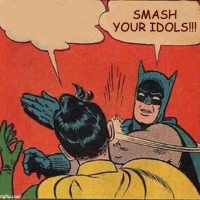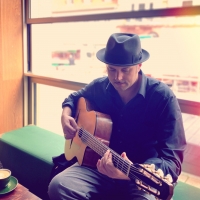DjangoBooks.com
Welcome to our Community!
Categories
- 20K All Categories
- 1.1K General
- 475 Welcome
- 59 Archtop Eddy's Corner
- 146 CD, DVD, and Concert Reviews
- 383 FAQ
- 26 Gypsy Jazz Italia
- 24 Photos
- 202 Gypsy Picking
- 21 Unaccompanied Django
- 15 Pearl Django Play-Along Vol.1
- 17 Gypsy Fire
- 45 Gypsy Rhythm
- 1.4K Gypsy Jazz University - Get Educated
- 130 Gypsy Jazz 101
- 223 Repertoire
- 217 History
- 706 Technique
- 51 Licks and Patterns
- 6 Daniel Givone Manouche Guitare Method Users Group
- 20 Eddie Lang Club
- 1.3K Gypsy Jazz Gear
- 797 Guitars, Strings, Picks, Amps, Pickups and Other Accessories
- 455 Classifieds
- 49 Recording
- 62 Other Instruments
- 18 Violin
- 5 Mandolin
- 22 Accordion
- 7 Bass
- 10 Woodwinds
- 342 Gypsy Jazz Events
- 141 North America
- 108 Europe
- 93 International
In this Discussion
Django's hand technique analyzed in academic paper
I just came across this academic paper from the publication "Prosthetics and Orthotics International," published in 2015:
"More with less: A comparative kinematical analysis of Django Reinhardt’s adaptations to hand injury"
http://journals.sagepub.com/doi/full/10.1177/0309364614523173
The authors, specialists in hand motion, did a frame-by-frame analysis of Django's "J'attendrai" video to determine how differently his hand moved from "normal" guitarists. They compared Django's hand movement to the movement of Robin Nolan, Stochelo Rosenberg, Angelo Debarre and a few others (see "Table 1" in the paper).
The result? "Django employed greater abduction of index and middle fingers (−9.11 ± 6.52° vs −5.78 ± 2.41°; p < 0.001) and more parallel alignment of fingers to the guitar neck (157.7 ± 3.37° vs 150.59 ± 2.67°; p < 0.001) compared to controls."
So now you know.
"More with less: A comparative kinematical analysis of Django Reinhardt’s adaptations to hand injury"
http://journals.sagepub.com/doi/full/10.1177/0309364614523173
The authors, specialists in hand motion, did a frame-by-frame analysis of Django's "J'attendrai" video to determine how differently his hand moved from "normal" guitarists. They compared Django's hand movement to the movement of Robin Nolan, Stochelo Rosenberg, Angelo Debarre and a few others (see "Table 1" in the paper).
The result? "Django employed greater abduction of index and middle fingers (−9.11 ± 6.52° vs −5.78 ± 2.41°; p < 0.001) and more parallel alignment of fingers to the guitar neck (157.7 ± 3.37° vs 150.59 ± 2.67°; p < 0.001) compared to controls."
So now you know.
Give my albums a listen: Melodic Guitar Music and Layer Cake















Comments
He's a great guy, and obviously a huge Django fan.
They made a video presentation of this a few years back.
Still interesting though!
The ideal study design to answer this question would be 2-finger Django vs. full-finger Django playing the same melody. With this design, the guitarist is no longer a variable but a constant, and the only variable that may cause anatomical compensation is the left hand situation.
But this is impossible. Therefore the authors chose 2-finger TrueDjango vs. full-finger NearDjango while playing J’Attendrai’s melody. In a way, that the NearDjangos (Nolan, Santifaller and Smith) have imitated Django made them a “less confounding” comparison group because they are closer to TrueDjango than non-Django players.
Nevertheless, your proposal is totally valid. It would be very interesting to compare 5-finger NearDjango with 5-finger nonDjango and see how they play differently while playing J’Attendrai’s melody. This is a different research question, though.
(**The authors also chose Debarre, Lafertin and Rosenberg but not while playing J’Attendrai’s melody. By including them, the research question was how TrueDjango played A melody differently compared with when NearDjango play A melody.)
Here are a few.
1. Play on a single string with one finger.
2. Play with one finger on two adjacent strings.
3. Play with two fingers on a single string.
You can pretty much go on for ever.
You might even compound some ideas to come up with a simple algorithm like.
Play the principal notes with your second finger shifting frequently, play lower note decorations with the first finger and bend for higher note decorations.
And of course you would not be the first to arrive at this.
But that doesn't matter you could find another one that is new and helps you to make your own ideas come alive. And you might even notice that you have a few already.
D.
Didn't want to start a new post on Django's left hand, so figured I'd add to this thread. I happened to be looking at this picture and zoomed in to see his left hand. I always thought Django just used his ring & pinky fingers for chords such as a G6/9 or a D9, etc. In other words, I thought the two were more static that could just be used on the 2 high strings. But, it looks like he's playing a B major chord second inversion with the high B root on the first string. That's a nice stretch!
I'll bet this was the same shape more or less he used to play his octaves.
I always wondered how much mobility he had in ring and pinky. He must've had some, at least in the knuckles joint. But did he have any mobility whatsoever in the first and second joints?
Talking about hands and stretches... It's said that Ida Presti could grab this E chord as easy as any mortal can grab an Am7, posted here just because I am fascinated with this photo. Plus I love Ida Presti's playing. There's a book called "Django Resusscite" by a Dr Pierre Marty which goes into the medical aspects of Django's injury in some detail. Only in French, though.